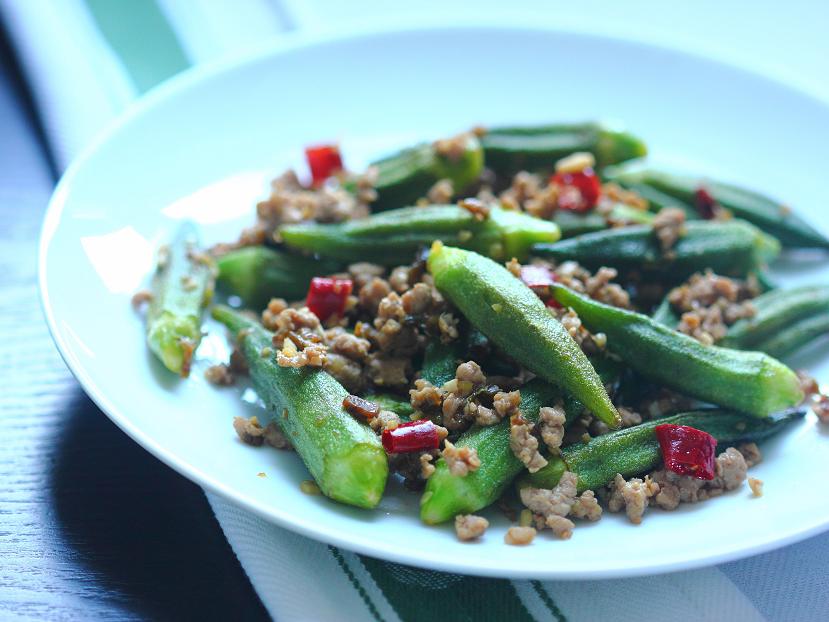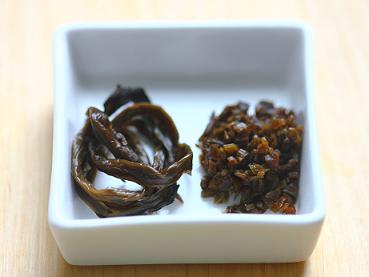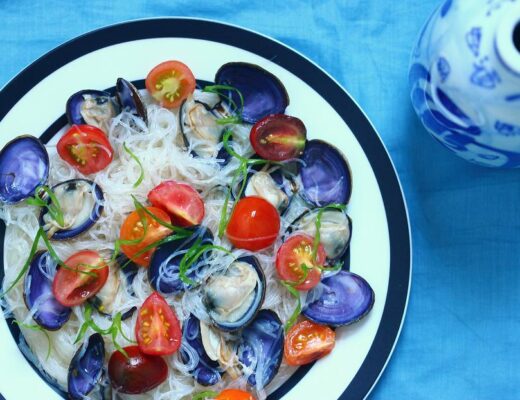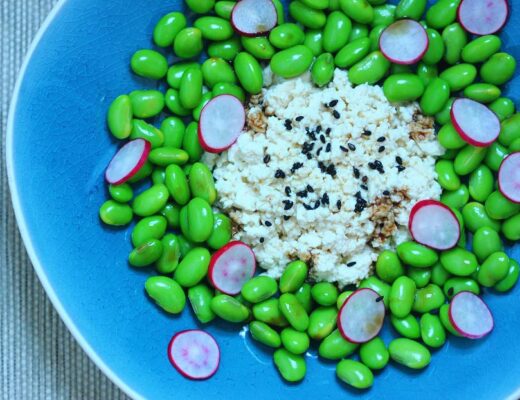Last Updated on March 13, 2021 by Simon Fan
Okra is not traditionally used in Chinese cooking, which is why you won’t find it in the repertoire of classic Chinese recipes.
However, it has gained popularity in China in recent years and is viewed as an upmarket ingredient with great health and nutritional benefits. Both professional and home cooks are enthusiastically experimenting with this “new” ingredient and creating new recipes that draw inspiration from traditional Chinese techniques and flavorings, such as stir-fried okra with shrimp, braised okra with soy sauce, and steamed okra with Hunan chopped salted chilies.
 Each summer, when okra is in season, I like to come up with new recipes to fully enjoy this amazing vegetable. The dish I’m sharing with you here is my latest creation. It’s a riff on one of Sichuan’s most famous dishes, dry-fried green beans (干煸四季豆).
Each summer, when okra is in season, I like to come up with new recipes to fully enjoy this amazing vegetable. The dish I’m sharing with you here is my latest creation. It’s a riff on one of Sichuan’s most famous dishes, dry-fried green beans (干煸四季豆).
As with green beans, dry-frying, called gan bian (干煸) in Mandarin, is a perfect cooking method for okra. When you cook okra whole with a small amount of oil over medium heat, it gradually turns tender, becomes slightly blistered, and takes on a crisp-tender texture simlar to that of green beans.
This technique is also a great way to control the slime factor of okra—when you minimize its interaction with liquid, mucilage inside the okra is effectively kept in check!
Dry-fried okra would be fantastic on its own when seasoned with salt and pepper. However, the addition of ground pork and ya cai (芽菜), a unique preserved vegetable from Sichuan, makes the dish even more intriguing with layers of flavors. Ya cai is available at most Chinese grocery stores. If you cannot find it, substitute other types of Chinese preserved vegetables such as zha cai (榨菜) or simply omit it.
You can use the dry-frying technique for meat dishes as well. Check out my recipe for Sichuan dry-fried beef with Chinese celery and carrots.
Dry-fried okra with ground pork and ya cai
Serves 2
Ingredients
8 oz (230 g) okra, preferably small-sized
2 tablespoons vegetable oil
2 garlic cloves, minced
1-inch (2.5 cm) piece of ginger, peeled and minced
2 dried chili peppers, seeds removed and cut into ½-inch (1.3 cm) pieces
4 oz (115 g) ground pork
2 teaspoons Shaoxing wine
2 teaspoons soy sauce
1 teaspoon Zhenjiang (aka Chinkiang) vinegar
2 teaspoons chopped ya cai (芽菜, see Note below)
Salt and freshly ground white pepper
Directions
- Trim the tops of the okra. Rinse, drain well, and pat completely dry with paper towels.
- Place a wok or skillet over medium heat until hot, then swirl in the oil. When the oil starts to shimmer, add the okra and stir-fry until it has turned soft and is blistered in spots, 5 to 6 minutes. Lower the heat if the okra starts to turn brown quickly while cooking. Transfer the okra to a plate lined with paper towels to drain.
- Add the garlic, ginger, and chili peppers to the wok with the remaining oil, and stir-fry over medium-high heat until aromatic, about 15 seconds. Add the pork and stir-fry, breaking up the clumps, for 1 minute. Return the okra to the wok and add the wine, soy sauce, vinegar, and ya cai. Stir and mix until the pork is cooked through and the flavors are well combined, about 1 minute. Adjust the seasoning with salt and pepper, and serve right away.
Note: Ya cai (芽菜) is one of the most distinctive flavoring ingredients in Sichuan cooking. Made from the tender stems of a local variety of mustard green through a double fermentation process, it has a complex salty, sweet flavor and is rich in umami. It appears in several classic Sichuan dishes such as dry-fried green beans and dan dan noodles. Ya cai is available at Chinese grocery stores. The best ones are labeled as Yibin ya cai, from the city of Yibin (宜宾) in Sichuan Province.




